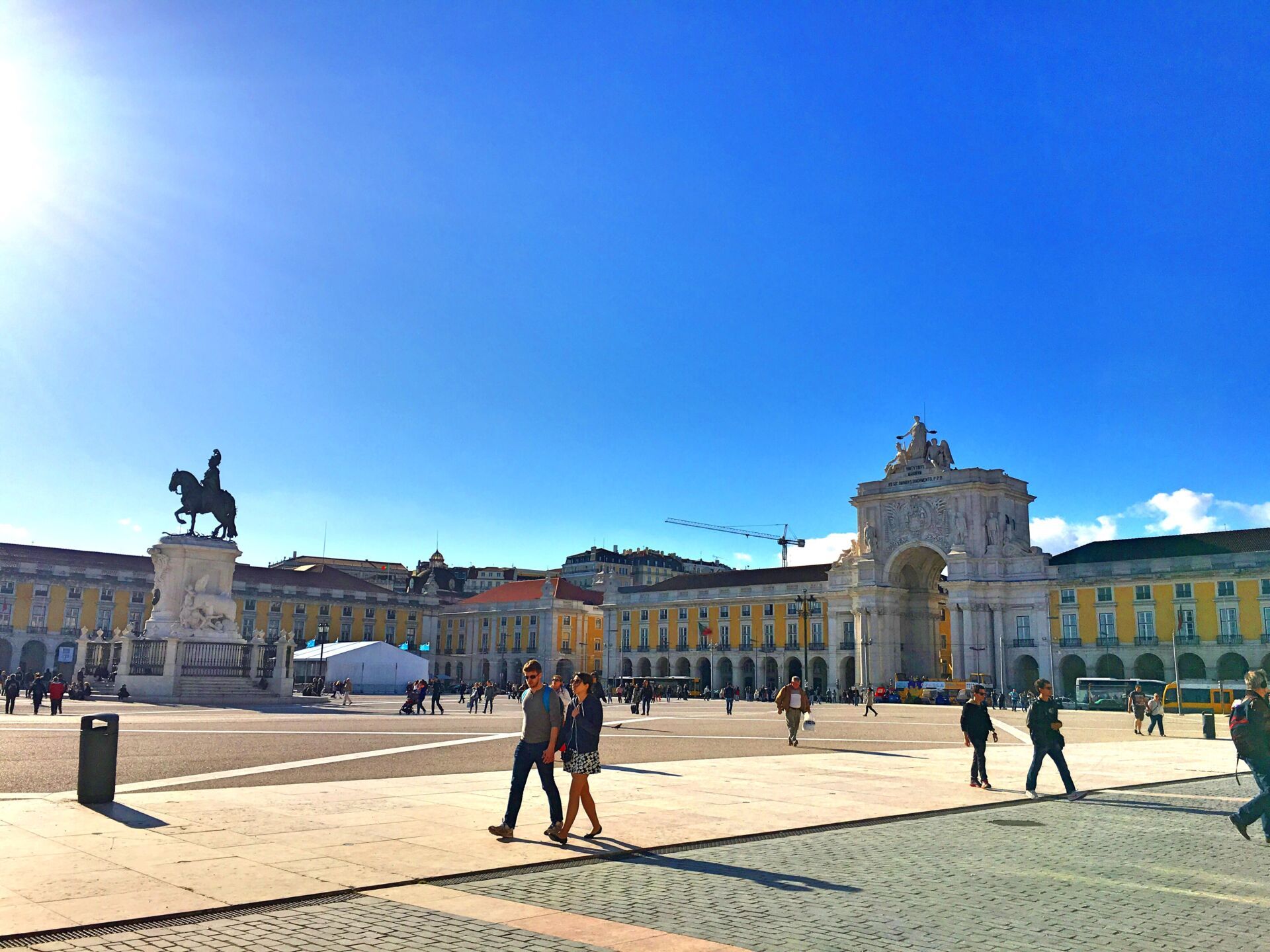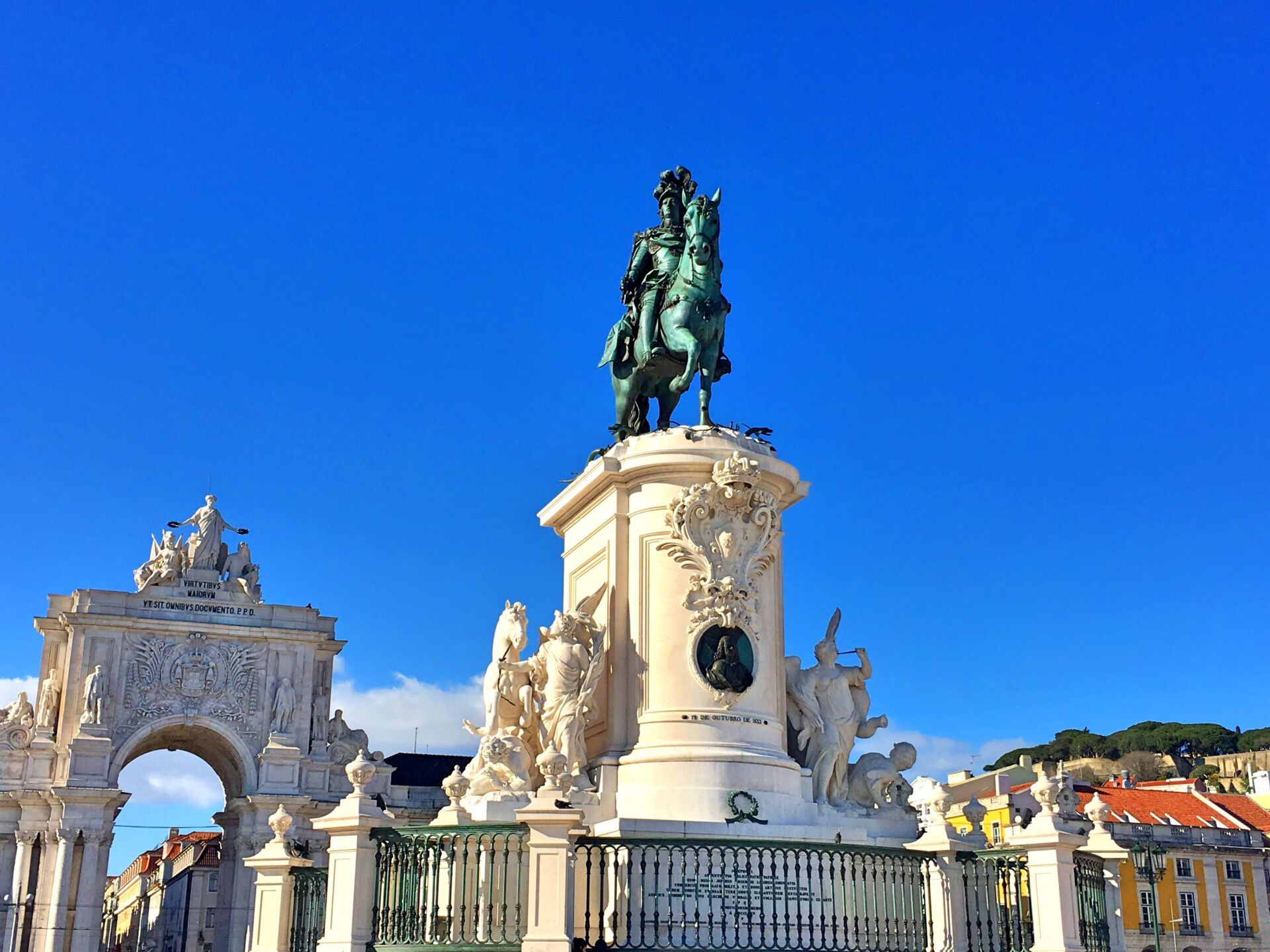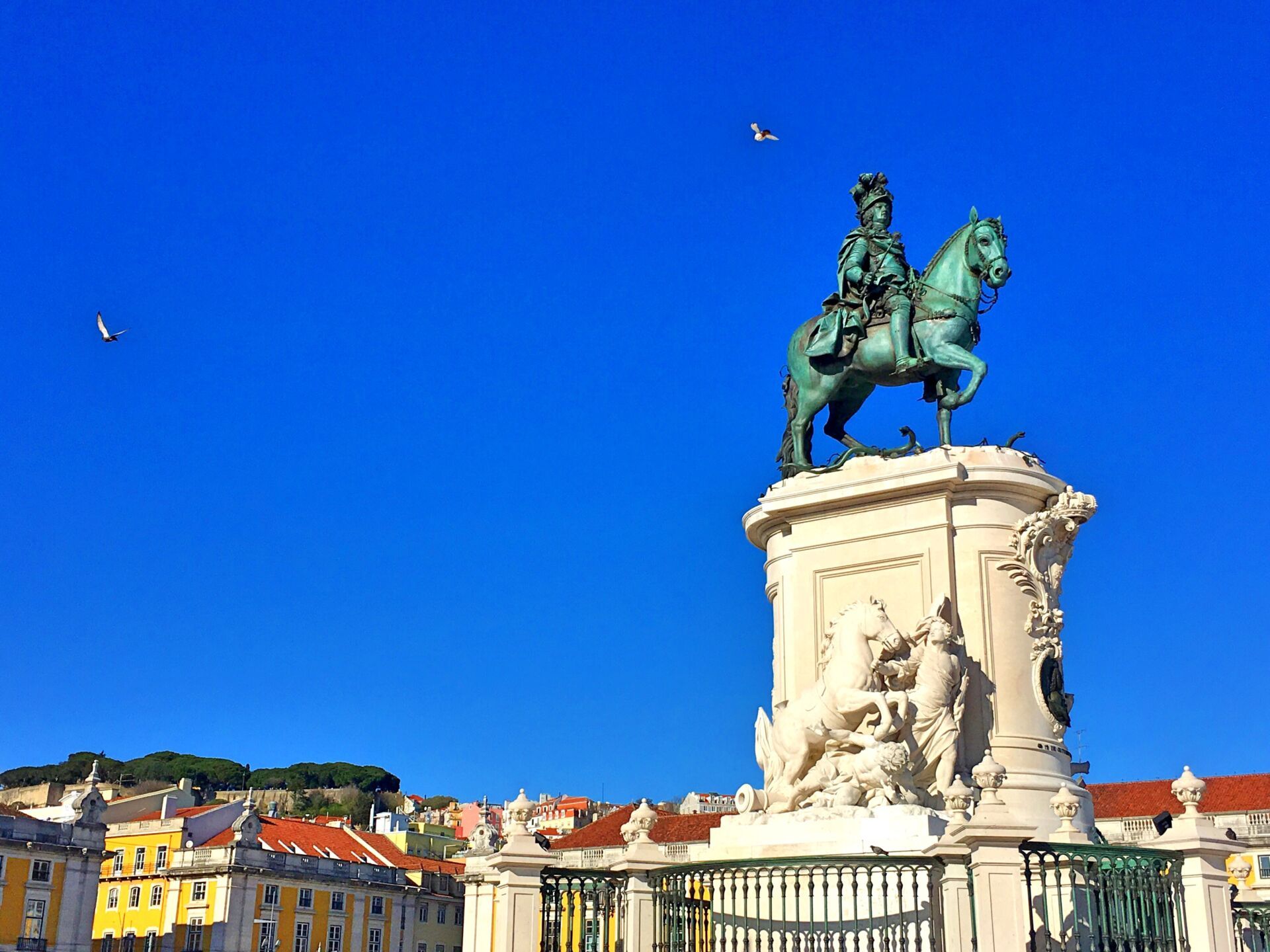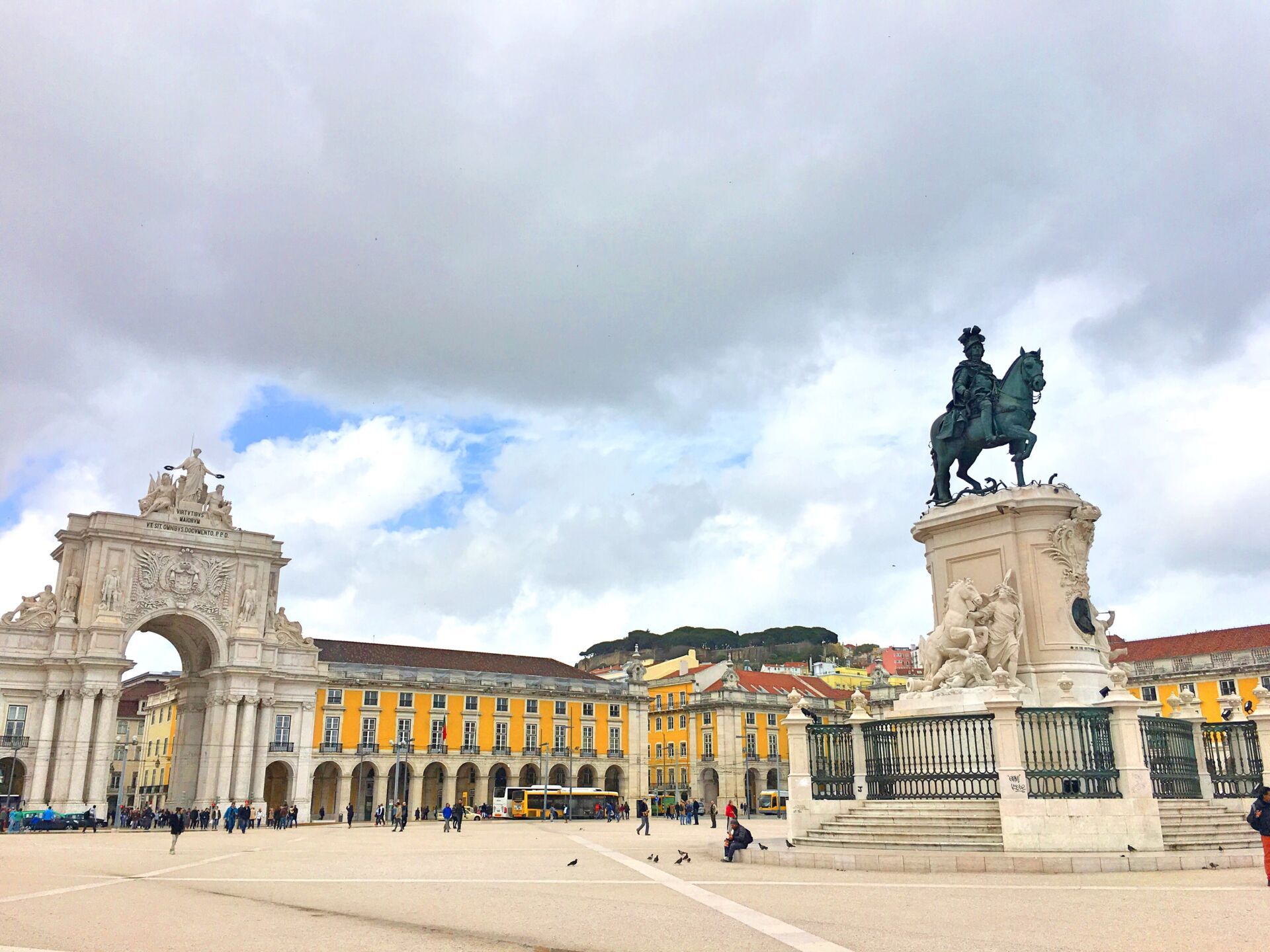One of the most photographed places in Lisbon is undoubtedly the Praça do Comércio. Right in the heart of the capital, this vast square is surrounded on three sides by beautiful, yellow building facades and on the other by the river Tagus (Tejo). Tourists flock to it – yet, how much do they really know about its astonishing and deadly past?

The area we now call the Praça do Comércio underwent development at the start of the 16th century, when King Manuel I built his residence (the Ribeira Palace) there. A number of commercial buildings followed suit. This square (still also known today as the Terreiro do Paço) became the port of Lisbon; in it, public celebrations, fairs and markets all took place. It was a bustling, exciting location for trade and maritime exploration for two and a half centuries.
You wouldn’t know it from visiting today, but on November 1, 1755, the palace, the square and, in fact, most of Lisbon was destroyed by a massive earthquake, fires arising from the earthquake and by a tsunami that followed the seismic shifts. It is estimated that the earthquake registered between 8.7 and 9.0 on the Richter scale. With death toll estimates starting at 10,000, it was of history’s deadliest earthquakes.

The square was rebuilt during King José I’s reign, under the supervision of the Marquis de Pombal, whose palace in Oeiras I recently visited. Renamed the Praça do Comércio (Commerce Square), it came to house commercial and port-related government buildings. Today, a statue of King José I looking out towards the river, lies right in the middle of the Praça. The Smithsonian Channel vividly recreated that terrible moment in Portuguese history in this 2-minute video, which clearly reveals the extent of the damage.
The deaths that took place there in 1755 were not the only ones: on February 1, 1908, King Charles I and his eldest son were both fatally shot there by members of the Republican Party, which would overthrow the monarchy two years later.
Next time you stand here, taking photos to show envious friends and family, take a second to look at the river and imagine that tsunami coming towards you.




[…] dating back to the first half of the 18th century, before Lisbon was destroyed by the great earthquake of 1755. I probably spent a little too long in this room identifying the various buildings that are […]